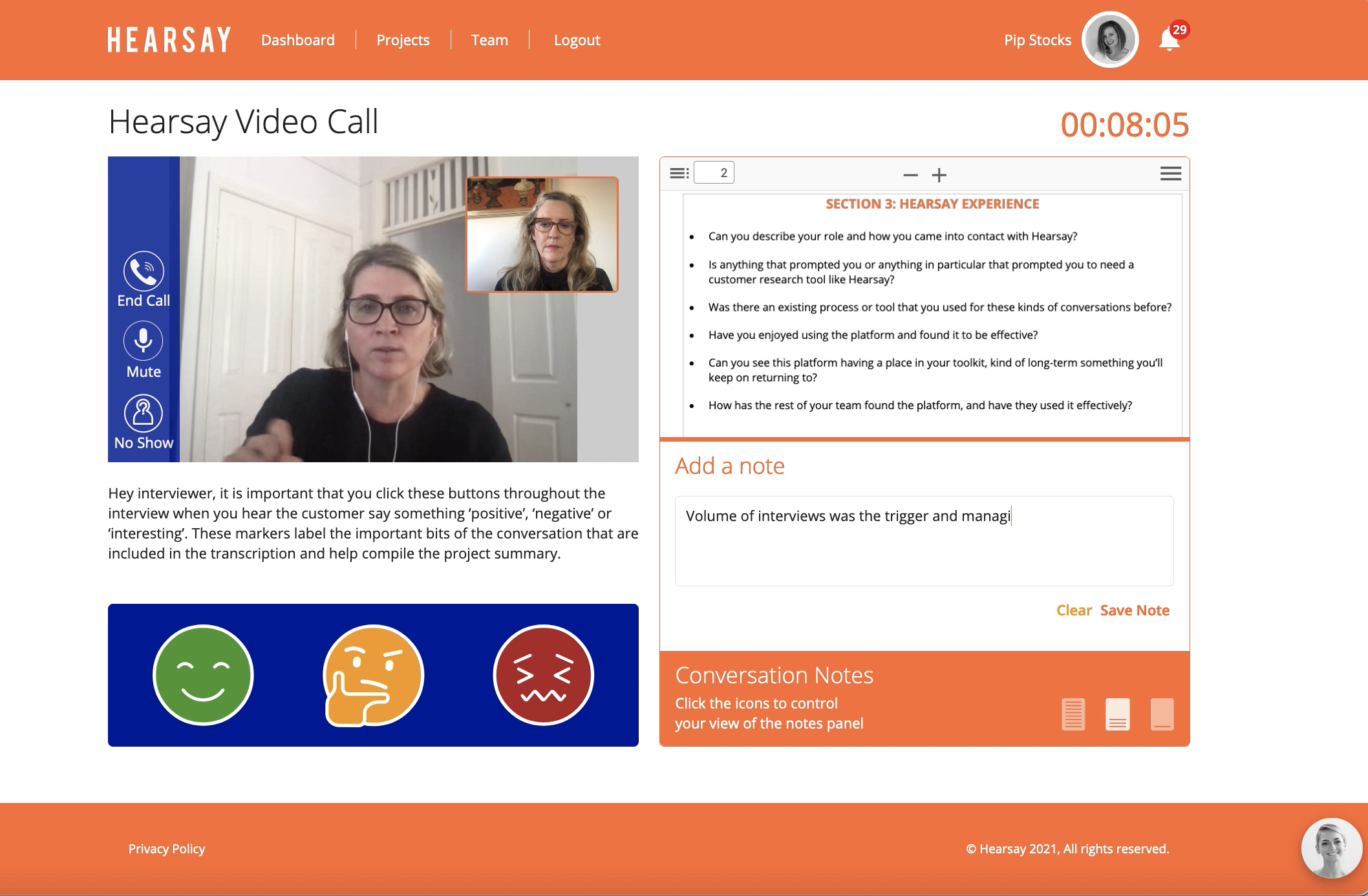Enhance Research and their experience with Hearsay
“I can see Hearsay being something that we include in every proposal where qualitative in-depth interviews are a requirement. It will just be part of the way we do business. Like when we run focus groups, we book a room and we organise transcription. In this case, when we are doing 1 to 1 interviews, we organize it through Hearsay.”
Jo Brassington, Senior Account Director, Enhance Research
Can you describe your role and how you came into contact with Hearsay?
I am a Senior Research Director at Enhance Research working with clients to manage their research process; from developing proposals right through to delivery of insights and working with an organization to make sense of that.
I heard of Hearsay through our CEO George and his connection with Pip. I remember receiving a demo and thinking, yeah that’s really cool. I could immediately see the benefits of Hearsay.
Is anything that prompted you or anything in particular that prompted you to need a customer research tool like Hearsay?
I was writing a proposal for 30 in-depth interviews, and I was thinking that this is going to be full on. I was worried about managing multiple people on the project and the amount of sessions we were running. I knew that Hearsay would help us get all that work done, make it easy for us and more efficient.
And that was the first proposal! Then we just got a whole bunch of other projects, all with an in depth interview approach so that cemented for me that we needed Hearsay.
Was there an existing process or tool that you used for these kinds of conversations before?
Not specifically, we would mostly use the phone for in depth interviews and then record using a voice recorder. Or we would use Zoom as well and record that way depending on the client preferences. It was a bit ad hoc.
Have you enjoyed using the platform and found it to be effective?
It has been so easy to manage multiple projects and multiple people. It means any one, at any time, can go in and see where their project is at. They can see what interviews are up and coming and can allocate themselves to those sessions. You’ve got the ability to have observers and we’ve had quite a high take up of clients wanting to come in and watch the interviews and that has been really easy.
Having our conversations transcribed is new for us and historically we haven’t always done that because of the cost associated with it. So, having that in Hearsay is a new benefit for us as well.
And then all the new stuff you have coming out around all the analysis tools is exciting for us.
Can you see this platform having a place in your toolkit long-term? Something you will keep returning to?
Absolutely, I can see us including Hearsay in every proposal where we have to run in depth interviews. It is now just part of the way we do business. Like we would do a focus group, we book a room and we organize transcription. If we’re doing in depth interviews, we organize it through here. It just automates that process for us.
How you and the team enjoyed using Hearsay?
We are really enjoying it. In the past, each of us in the team ran our in-depth interviews differently. Some people have typed all the conversations out live, and now they have realized that they’ve basically been transcribing. Some of us have made excessive notes all the way through but don’t need to do that now because it is all being recorded.
We are basically enjoying that everything is also just in one place, and it is neat and tidy. I don’t have to go chasing other team members for their notes on a particular interview, it’s all just there.
Hearsay has challenged us to think about what we’re doing and how we are going to improve our research practices.

